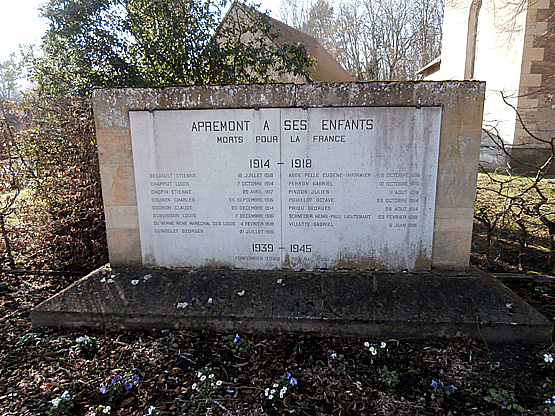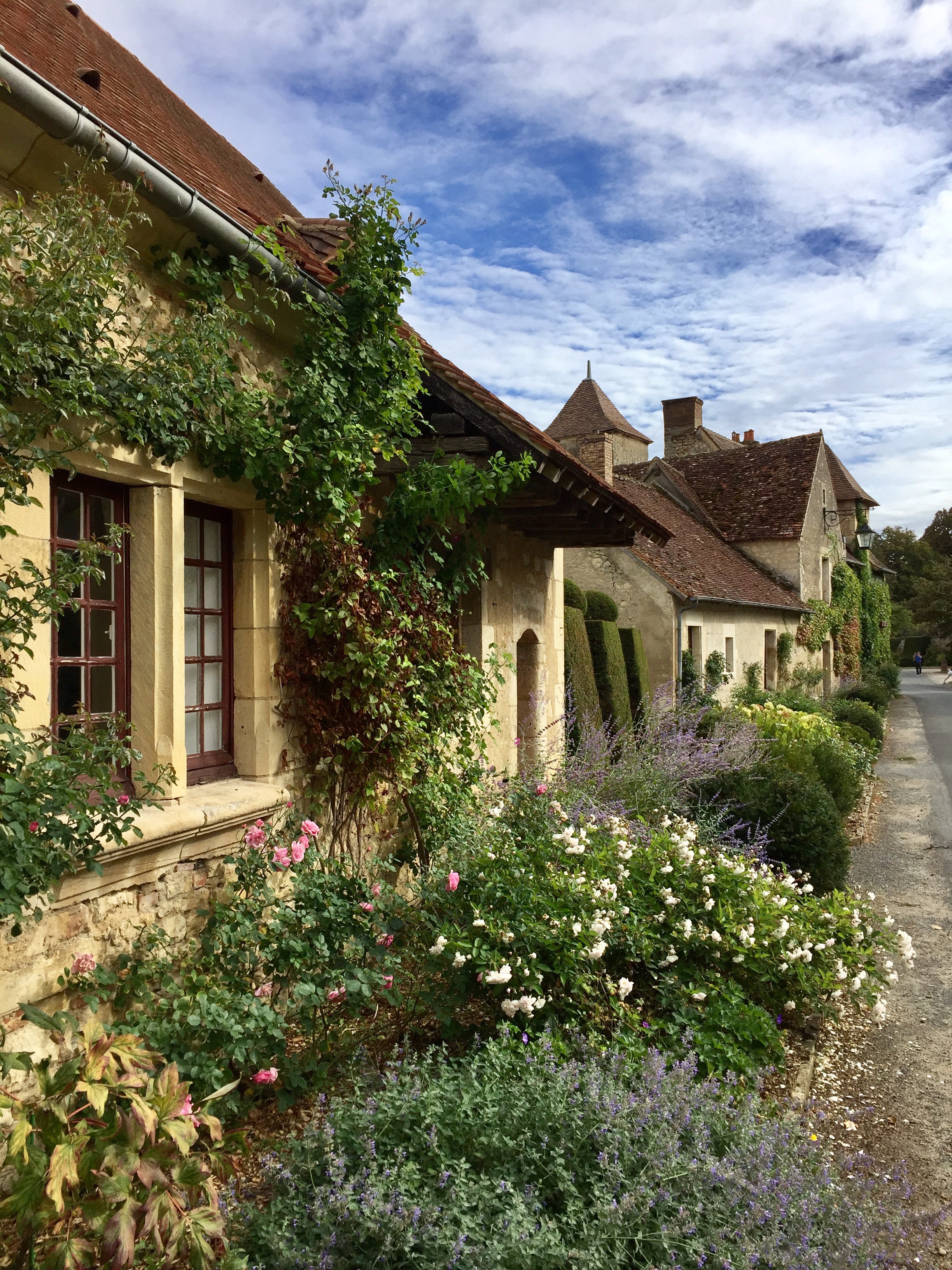On 11 November 2018, nations that participated in “The War to End All Wars” commemorate its end a century ago. We have been living in France the last several weeks and aware of the exhibitions about the history of World War I, many of them focused on letters such as the slow-motion animation we saw at the Paper Museum in Angouleme in which a battlefield nurse uses strips of love letters as bandages: Lettres de Femmes. We’ve also noted the village monuments that list their World War I dead “Enfants mort”; notably, each small town contains a long list for WWI; the additional names for WWII are few.

We rented a house in Apremont-sur-Allier, one of France’s Les Plus Beaux Villages, “most beautiful villages,” and it certainly was with honey-colored stones consistent throughout its medieval houses, situated charmingly along the Allier River. Its Parc Floral is a huge tourist draw, but the number of residents is below 100, and we wondered if WWI was the beginning of the end for this town.
I dipped into books and films focused on World War I a few years ago, and I found it one of the most affecting subjects of my reading career. The films to recommend: My Boy Jack, starring Daniel Radcliffe as Rudyard Kipling’s 18 year old son who volunteers for service and is quickly killed; A Very Long Engagement, a French film with the star of Amelie, about a woman who persists in finding her fiancé, who has PTSD and cannot remember who he is; Joyeux Noël, which focuses on the unlikely truce between the soldiers in opposite trenches on Christmas Eve; Gallipoli, the introduction of Mel Gibson in a film about incompetence and horror of war, beautifully scored with Pachelbel’s Canon. We also saw onstage War Horse, an extraordinary use of life-size horse puppets.
One of the topics that rises to the top is the number of soldiers killed by their own armies for cowardice. Over 300 soldiers in British and Commonwealth armies were shot for desertion or cowardice. Most likely, many suffered from shell shock. Justice Hall, one in the series by Laurie King featuring Sherlock Holmes and his wife Mary, takes up the subject. Jacqueline Winspear, author of the Maisie Dobbs series set after WWI, in Birds of a Feather, brings to bear the symbolism of the white feather, used as an insulting sign of cowardice. (Another post-WWI detective-heroine is Jade Del Cameron, who graces the pages of Suzanne Aruda’s mysteries set in Africa. An ambulance-driver on the Front, she is devastated by the death of her fiancé in battle, but still manages to solve crimes with alacrity.)
Two WWI novels for young readers that I’ve admired are Hattie Big Sky by Kirby Larson, about a 16-year old orphan homesteading in Montana watching the effects of the war on German immigrants, and Remember the Dancing Days by Margaret Rostkowski. Margaret says that she was inspired by a scene from Chariots of Fire, when the athletes come face to face with disabled veterans. Classics include All Quiet on the Western Front and A Farewell to Arms.
Finally, I’ll mention the concerted efforts to recover women’s voices from World War I. Tammy Proctor’s work, in particular, has done this to good effect: Female Intelligence: Women and Espionage in the First World War; An English Governess in the Great War; Civilians in a World at War, 1914-1918; and Gender and the Great War (with co-author Susan Grayzel). One of the female spies was Marthe McKenna, a Belgian nurse whose “Overlooked No More” obituary recently appeared in the New York Times.
The War to End All Wars—Didn’t
During our stay in Apremont-sur-Allier, we biked the country roads consistently. It is in the vicinity of the famous Loire Velo (bicycle) Trail that extends to the Atlantic.
Along the roads were signs that I could not figure out until I finally stopped and read one thoroughly. They marked the boundary between Occupied and Free France. It was one of those heart-stopping moments, reminding me of the traumatic experiences these people faced yet again. Just beyond Apremont, Mornay-sur-Allier was a haven for refugees–until 1943 when France became fully occupied.

Line of Demarcation Sign 
Mornay-sur-Allier (Free France)
To think about that time more deeply, I read Code Name Verity by Elizabeth E. Wein. Although classified as young adult, it’s an engrossing and harrowing read that adults should enjoy. Two young women—one a British pilot and one a Scottish spy—are in occupied France–the latter being interrogated and tortured, and the former trying to rescue her. The Gestapo agent calls his prisoner a Scheherazade whose written confession, strung over days and weeks, keeps him entranced.

France and other countries involved in World War II are gearing up for the 75th anniversary of D-Day with enhanced points of interest and trails.
Both fiction and nonfiction clearly depict war as both horrific and futile, yet they do not end. This is a good day to reflect on war and its meaning and to honor those who served.
In writing this post, I honor my father’s older half-brother, Roy Kinkead, who served in World War I. My Dad, born in 1917, played with these toys, now in the Benton County Historical Museum while his brother was away.









